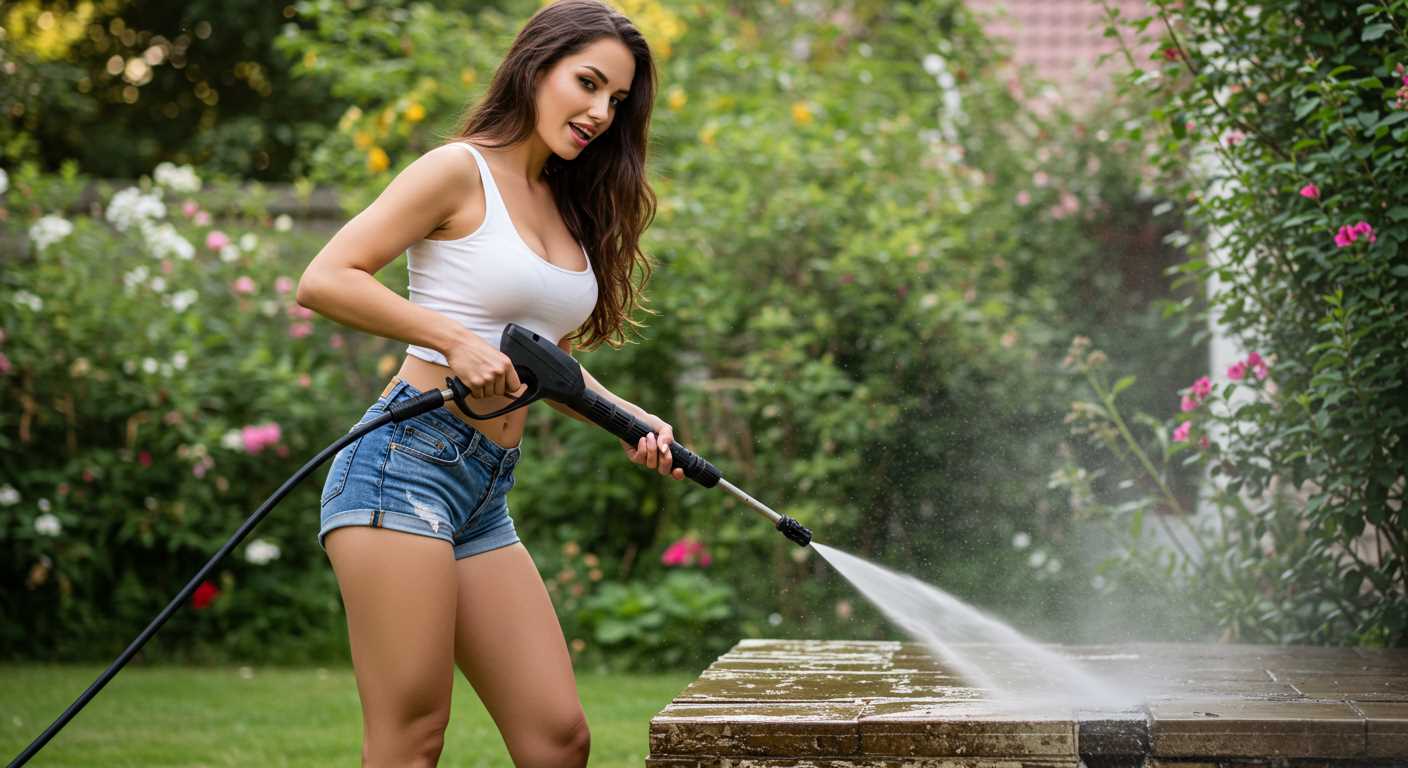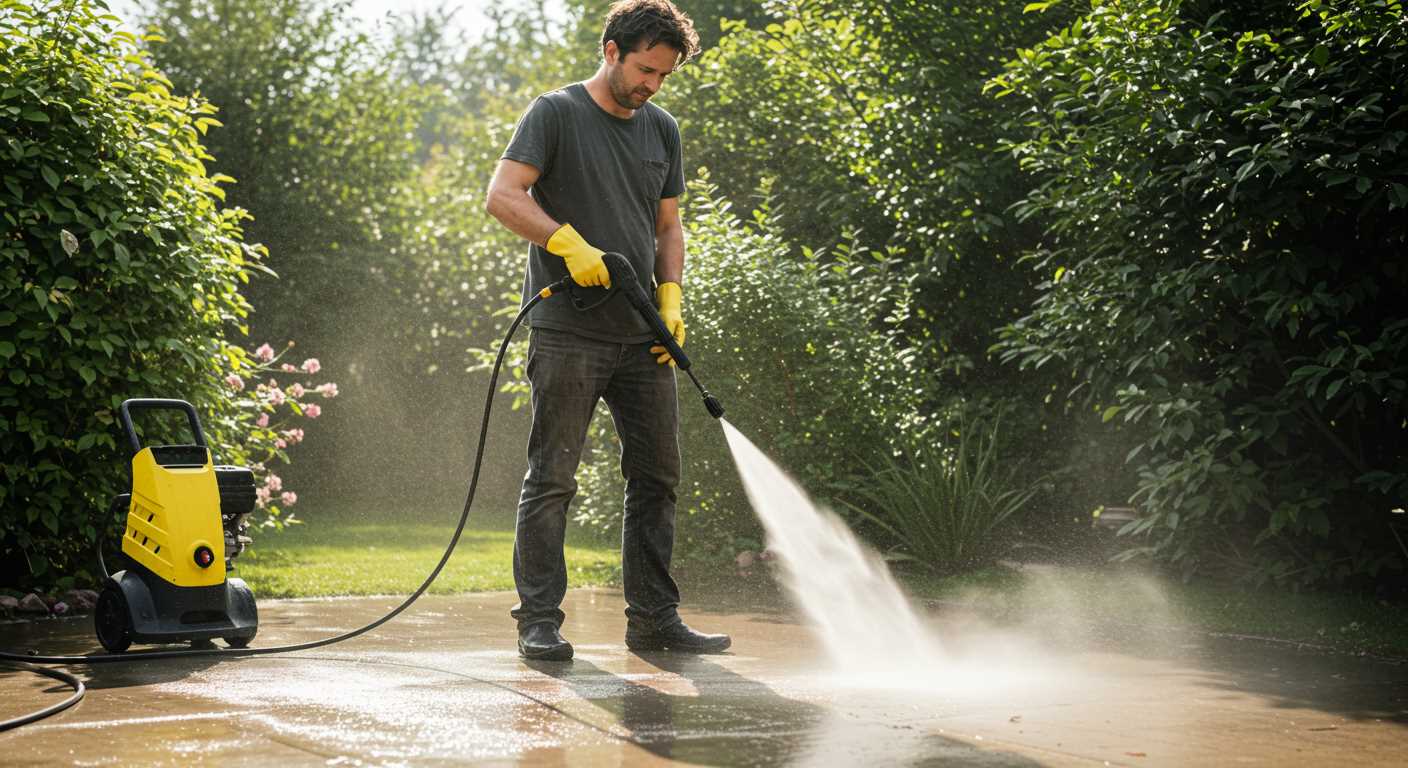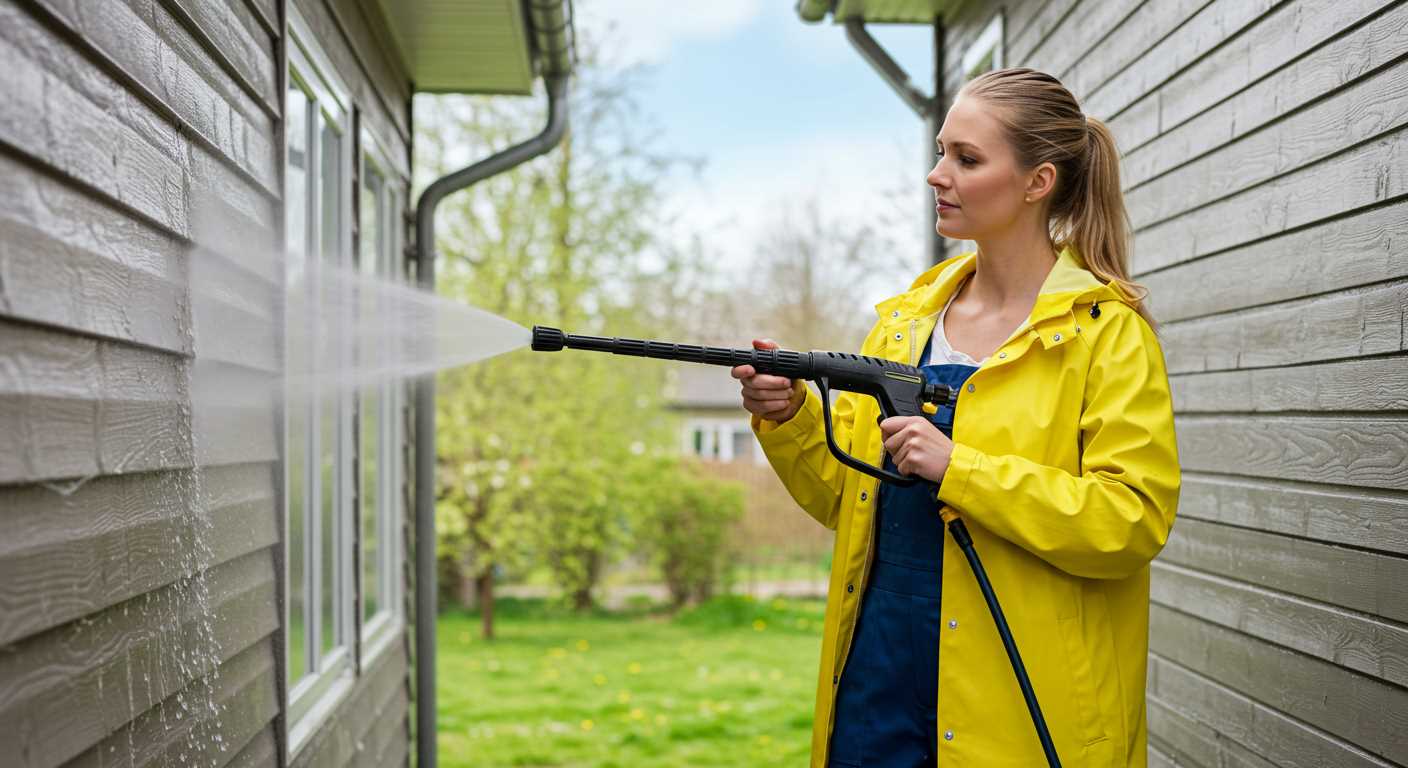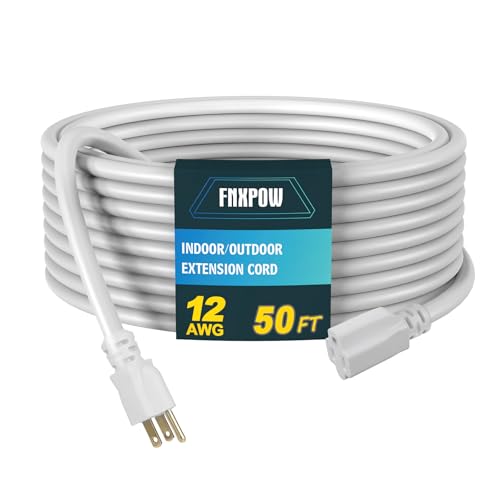



Utilising a high-powered cleaning unit can achieve successful stripping of unwanted coatings on metallic surfaces. With the right techniques, one can safely dislodge layers without causing damage to the underlying material. It’s essential to select the appropriate nozzle and pressure setting to effectively target the coating without compromising the integrity of the metal.
Begin with a low-pressure setting and a suitable nozzle to prevent any risk of dents or deformation. Gradually increase the intensity while keeping a close eye on the results. It’s advisable to maintain a distance of about 12 inches between the nozzle and the surface to avoid excessive impact.
In instances where tougher layers are present, pre-treating the surface with a dedicated remover can enhance the cleaning process. This approach allows the high-powered unit to work more effectively, breaking down the coating faster and reducing potential wear on the metal beneath.
After stripping the surface, thorough rinsing is crucial to eliminate any remaining residue. Following this procedure, it’s wise to inspect the metal for any new signs of corrosion or damage that may need addressing.
Armed with these techniques and insights, one can confidently approach the task of clearing unwanted coatings. With careful execution, you can expect successful results while preserving the underlying surface.
Understanding the Basics of Pressure Washing
Choose the right nozzle carefully; it significantly influences the output. Different tips deliver varying spray patterns and pressure levels. A wider spray pattern will distribute force over a larger area, reducing the risk of damage to surfaces. For tougher tasks, a narrower spray concentrates power but may harm more delicate surfaces.
Always begin with the lowest setting. Familiarising yourself with the control system helps prevent accidents. Gradually increase the intensity based on the surface you’re addressing. This cautious approach gives you time to evaluate results without causing irreversible harm.
Water temperature matters. Using heated water enhances cleaning efficiency, particularly with oils or grease. Ensure your equipment is rated for hot water use; not all units can handle elevated temperatures, which may void warranties or lead to malfunction.
Prior to commencing, inspect the area for any loose objects or foliage. This preparation prevents debris from becoming a hazard during operation. Similarly, ensure that all windows, doors, and any other openings are securely closed to avert water intrusion.
Maintain a safe distance when operating. Keeping a consistent distance from the surface being treated minimises the risk of etching or gouging. Moving too close can exert excessive force, creating lasting scars. Aim for about 2 feet as a benchmark for most surfaces.
After clearing, rinse thoroughly. Residual cleaning agents or dirt can promote corrosion or other forms of deterioration if left untreated. Follow up with a low-pressure rinse to ensure no cleaning solution lingers, preserving the integrity of the surface.
Finally, read the manufacturer’s guidelines. Each unit comes with specific recommendations based on capabilities and limitations. Adhering to these instructions ensures optimal performance and longevity of your equipment.
Types of Coatings Suitable for High-Pressure Applications
For optimal results with a high-powered cleaning device, certain types of coatings yield better outcomes than others. Here’s what I’ve observed through years of hands-on experience:
1. Water-Based Coatings

- Acrylic enamels are particularly receptive. Their bonds tend to loosen under intense force, allowing for effective lifting.
- Latex paints, especially those that have aged or begun to degrade, respond well to vigorous spraying. The water content helps to break down their structure.
2. Oil-Based Finishes
- These can be more challenging. However, older, weathered varieties often present an opportunity for success, as their adherence diminishes over time.
- Alkyds that have begun to crack or peel may also give way more easily, revealing the surface below.
For the best outcomes, ensure that the substrate is prepared adequately beforehand. Areas with loose or flaking material will respond most favourably to the concentrated stream. Always assess the condition of the coating to tailor the approach.
Choosing the Right Settings for Paint Removal
Opt for a nozzle with a narrow angle, typically 15 to 25 degrees. This concentration increases the impact on stubborn layers, ensuring effective action without damaging the surface beneath.
Set the unit to a pressure range between 1500 and 3000 PSI, depending on the surface’s resilience. For tougher coatings, higher settings might be necessary, while softer materials require a gentler touch.
Adjust the distance between the nozzle and the surface. Maintain a distance of 12 to 24 inches to avoid etching or gouging. Closer distances can intensify force but risk damaging surfaces.
Using hot water can significantly enhance results. If the equipment allows, select a hot water setting to help break down old layers more easily.
For stubborn substances, consider using appropriate chemicals or detergents. Select a cleaning agent designed for the task, applying it as per manufacturer instructions before rinsing with high-pressure water.
Test settings on a small, inconspicuous area first. This step ensures optimal results and helps prevent unwanted damage.
Essential Safety Measures When Using a Pressure Washer

Always wear safety goggles to protect your eyes from debris and water spray. Gloves are advisable to shield your hands from high-pressure water and any chemicals used in the process.
- Ensure proper footwear. Sturdy, non-slip shoes will help maintain grip on wet surfaces.
- Before starting, read the manual thoroughly to understand the equipment. Familiarity with controls prevents accidents.
- Keep a safe distance from electrical sources. Use extension cords rated for outdoor use, free of damage.
- Never aim the nozzle at yourself or others. The force is capable of causing serious injury.
- Always be cautious of slippery surfaces. Wet areas increase the risk of slipping and falling.
- Check for loose fittings and leaks before operation. Regular maintenance enhances safety and performance.
- Work in well-ventilated areas, especially if using chemicals. Inhaling fumes can be harmful.
- Have a first aid kit readily accessible. Being prepared for minor injuries can make a significant difference.
Ensure that children and pets are at a safe distance while working. Maintaining a clear area reduces distractions and dangers.
Finally, never underestimate the power of high-pressure jets. Always treat the equipment with respect and caution. Safety should always be the top priority.
Techniques for Maximising Paint Removal on Metal Surfaces
Begin with a thorough surface cleaning to eliminate dust, debris, and contaminants, ensuring the best adhesion of the water stream. Opt for a nozzle that offers a concentrated jet for focused pressure. A 15 or 25-degree nozzle typically works effectively to direct force at the remaining coating without causing damage.
Adjust the distance from the surface; maintaining a distance of approximately 12 to 18 inches optimises impact while minimising the risk of surface etching or damage. Move the lance in a sweeping motion, overlapping each pass slightly to ensure even treatment.
Utilise heat to enhance effectiveness. If your equipment allows, applying warm water can soften the coating, making it easier to detach. Pre-soaking the area with a solution designed to assist in loosening existing layers may also provide assistance; allow adequate dwell time before aggressive action.
Consider varying the angle of the water jet. Tilting the nozzle at a slight angle can create a shearing effect, helping to penetrate beneath the edge of the layers, which might otherwise resist removal. Adjust the pressure settings appropriately; a range of 2000 to 3000 PSI typically suffices for most situations.
Keep in mind the type of surface. For intricate designs or textured elements, taking your time is vital to avoid gouging. Inspect frequently during the process to assess progress and adjust techniques as necessary.
Finally, rinse thoroughly after each session, ensuring that all remnants are swept away. This step prevents resettlement of loose particles that could complicate subsequent applications.
Post-Washing Care for Metallic Surfaces

Immediately after cleaning, rinse the surface with water to eliminate residue from the cleaning session. Allow the surface to dry thoroughly to prevent any potential rust formation, especially in areas prone to moisture exposure.
Inspect the surface for any damage. Check for dents, scratches, or areas where the coating may have been compromised. Address these imperfections promptly to maintain integrity.
Once the surface is dry, consider applying a protective coating. A quality sealant or primer can help safeguard against moisture and prevent future corrosion. Select a product appropriate for the specific type of metal being treated.
Implement regular maintenance checks. Schedule periodic inspections every few months to assess the condition of the metal and reapply protective coatings as necessary, particularly after harsh weather conditions.
For storage solutions, choose a dry, shaded location to prevent environmental wear. Avoid direct sunlight when possible, as UV exposure can degrade any protective coatings over time.
Finally, keep tools and equipment used in previous cleaning sessions organized and clean to ensure that they remain effective and do not cause unintentional damage during future maintenance.
| Action | Frequency | Notes |
|---|---|---|
| Rinse surface | Post-cleaning | Remove residue to prevent damage |
| Inspect for damage | Every 3 months | Identify and address imperfections |
| Apply protective coating | Annually | Use appropriate products based on metal type |
| Maintenance checks | Every few months | Reapply coatings as needed |
| Store correctly | Ongoing | Avoid moisture and direct sunlight |
FAQ:
Can a pressure washer effectively remove paint from metal surfaces?
Yes, a pressure washer can be effective in removing paint from metal surfaces, particularly if the paint is old or loose. The effectiveness often depends on several factors, such as the type of paint, the pressure of the washer, the nozzle used, and the distance from the surface. For best results, use a high-pressure setting and a narrow nozzle, which can help to focus the water stream on the paint. Additionally, pre-soaking the area with a paint remover can aid in loosening the paint further, making it easier to wash away.
Are there any risks or precautions I should take when using a pressure washer to remove paint from metal?
While pressure washing can be an effective method for removing paint, it does come with some risks and requires certain precautions. High-pressure water can damage the metal surface if not used correctly, potentially leading to dents or scratches. It’s important to start at a lower pressure and gradually increase it if necessary. Always maintain a safe distance from the metal surface to avoid damage. Additionally, protective gear such as goggles and gloves should be worn to prevent injury from flying debris or water. Finally, consider the environmental impact of paint removal, as old paint may contain harmful chemicals that should not be washed away indiscriminately.








